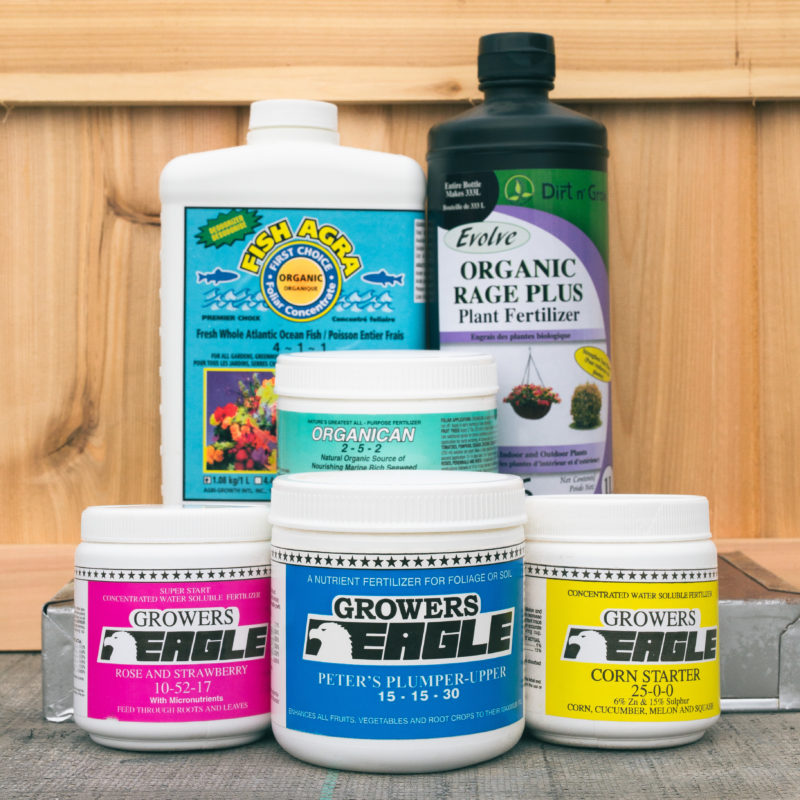Have you ever wondered how fertilizer affects your plants on a cellular level? Which nutrients are important and how do you choose? How can you tell which nutrients are lacking in your mix by looking at your plants!? Let us break it down for you! The three main components of fertilizers are Nitrogen, Phosphorus and Potassium. They each have an incredibly important role in plant growth and production.
Nitrogen
- Nitrogen (N) is a nutrient which helps a plant form its proteins. It is necessary for cellular processing of chlorophyll which supports photosynthesis. Lack of Nitrogen and chlorophyll means the plant will not utilize sunlight as an energy source to carry on essential functions such as nutrient uptake.
- Deficiency of Nitrogen is often seen in older leaves on the plants (shrivelled, pale yellow-brown). Abundance of nitrogen is often indicated by excess foliage and no blooms or fruit. By adding more of the other two nutrients you can counteract the effects of too much nitrogen.
- Plants that benefit from higher nitrogen: corn, soybeans
Phosphorus
- Phosphorus (P) is essential for plant growth, and a plant must have access to it to complete its normal production cycle. It helps to capture and convert sunlight into energy for growth.
- Phosphorus promotes root development and early seedling growth. The highest levels of Phosphorus in plants are found in the growing points of the plant. As crops mature, Phosphorus moves into the seeds, and fruit. Phosphorus stimulates root development, increased stalk and stem strength, and improved flower formation and seed/fruit production.
- Deficiency seen as stunted growth, lack of fruit production, discolouration(can be bronze, darker than normal green, or stripes/blotches).
- Plants benefit from higher phosphorus: newly planted trees and seedlings, garlic, sweet potatoes.
Potassium
- Potassium (K) is taken up in significant amounts by crops to support all other cellular processes.
- Potassium enhances many enzyme actions aiding in photosynthesis and food formation. And it is vital to producing grains rich in starch. Potassium reduces water loss and wilting. Potassium is known as the “quality nutrient” because of its important effects on factors such as size, shape, colour, taste, shelf life, and fiber.
- Plants deficient in Potassium are less resistant to drought, extreme temperatures and other stress. Plants lacking Potassium are more susceptible to pests and diseases.
- In many high-yielding crops, the Potassium content is comparable to the nitrogen content.
- Deficiency seen as discolouration most often in younger leaves as spots along leaf margins and veins. Can mimic ‘rust’ spots.
- Plants benefit from potassium during fruit production and ripening.


